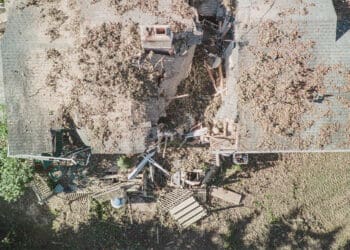Stamping out the impacts of climate change, along with child and forced labor, has long been the purview of national governments. But as investors and consumers wake up to the realities of a globalized world, regulators have begun shifting the onus, and a new principle of caveat emptor is taking shape. At the end of the long tail of these trends, compliance teams have their work cut out for them.
The pandemic has forced companies of every size, from mom-and-pop shops to global corporations, to reckon with numerous global supply chain challenges. Beyond shipping delays and component shortages, the pandemic has highlighted just how reliant multi-national corporations, especially those in the manufacturing industry, are on suppliers from across the globe.
The International Labor Organization estimates that about 25 million adults across the world are trapped in forced labor, the vast majority in the private sector. Child labor is even more prominent, affecting more than 150 million children worldwide. Forced labor and child labor may feel like something that only happens in remote parts of the world, but they are not. The products of forced and child labor, including agricultural products, minerals, garments, bricks and more, inevitably enter the global supply chain and pose risks to businesses.
Chocolate companies like Hershey, Mars and Nestle make $103 billion a year. In 2001 they vowed to eliminate child labor from their supply chain.
Since then the rate of kids in West Africa working to supply them with cocoa grew from 31% to 45%https://t.co/advlM7oJBa
— Dan Price (@DanPriceSeattle) October 19, 2020
Addressing these issues has long been the province of national governments, international courts and human rights organizations. But no longer — new laws and regulations are requiring the private sector to shoulder more of the burden in the fight against the use of forced labor around the world. These developments are of a piece with global trends that have seen regulators require multinational companies to also focus on environmental, social and governance (ESG) issues.
These developments create additional risks for multinational companies navigating the ever-growing global regulatory framework and increasingly critical constituent scrutiny. In addition to the risk of regulatory enforcement in multiple jurisdictions, these new supply chain regulations will likely prove to be another opportunity for private litigants. Ultimately businesses will be saddled with the burden — and costs — of complying with this changing landscape. To be fully prepared, companies should anticipate and mitigate risks beyond those apparent in the law.
The Widening Regulatory Regime
The United States has the oldest law targeting the importation of goods produced by forced labor. The Tariff Act of 1930 (also known as the Smoot-Hawley Act) prohibits the importation of any product that was mined, produced or manufactured wholly or in part by forced labor. But until 2016, the act was largely ineffectual due to its “consumptive demand exception,” which permitted the importation of forced-labor goods if U.S. domestic production of that good was insufficient to meet consumer demand.
The consumptive demand exception was removed by the Trade Facilitation and Trade Enforcement Act of 2015. Since then, U.S. Customs and Border Protection (CBP) has more aggressively enforced the Tariff Act. Under Section 307 of the Act, CBP can detain shipments and issue withhold release orders (WRO) and findings that prevent goods produced using forced labor from being imported into the U.S. So far in 2021, CBP has detained nearly 1,500 shipments and issued seven WROs.
As one example of the potential ramifications of increased CBP enforcement, in January 2021 CBP issued a WRO preventing cotton products from China’s Xinjiang Uyghur Autonomous Region from entering the United States. China currently produces one-fifth of the world’s cotton, with the Xinjiang region accounting for over 80 percent of China’s overall cotton production. But it’s not just China. For example, in October 2021, CBP issued a WRO halting the importation of fresh tomatoes from an industrial farm in Mexico, along with its subsidiaries. This WRO is partly attributable to the recent U.S.-Mexico-Canada Agreement, which allows for a “collaborative and multi-lateral response to forced labor enforcement actions within North American supply chains.”
More recently, the U.S. Senate unanimously passed S. 65, the Uyghur Forced Labor Prevention Act in July 2021. If enacted, the act would ban the importation of all goods produced in China’s Xinjiang Uyghur Autonomous Region, unless the CBP commissioner certifies that the goods in question were not the product of forced labor. The Senate bill is expected to pass in the House, which overwhelmingly passed a nearly identical bill in 2020.
And more are on the way. In 2021 alone, more than 30 bills that address supply chains were introduced in Congress. The House recently passed legislation that would require the SEC to issue rules defining certain environmental, social and governance metrics and which would require publicly traded companies to annually disclose how those metrics impact the business. Enforcement of this rule is still quite a ways off, but there are already models for how the SEC may decide to implement the requirement, such as the existing conflict minerals disclosure requirements. For companies, the shifting regulatory focus means that as the legal regimes involving supply chains grows increasingly convoluted, risk mitigation becomes ever more critical.
Supply chain regulations are not unique to the United States, though. Countries across the globe have recently enacted, or are considering enacting, new legislation that would impose supply chain due diligence obligations on companies. This legal landscape is rapidly evolving, and this piece is not intended as a compendium of all potentially applicable laws, but here are some examples:
- In the United Kingdom, the Modern Slavery Act 2015 imposes an obligation on large companies to audit and make annual disclosures about efforts to ensure that their supply chains are free of forced labor.
- In 2017, France passed the Corporate Duty of Vigilance Law, which requires large companies to establish plans of vigilance to identify, among other things, forced labor risks along their supply chains. This law permits any party “with standing” to bring an enforcement action against a company alleged to be noncompliant, and French NGO’s have been among the first parties to bring actions.
- In June 2021, the German Parliament passed Das Lieferkettengesetz (The Supply Chain Act). Effective beginning Jan. 1, 2023, the measure will require large German companies to conduct human rights and environmental due diligence along their supply chains, or risk significant penalties, disbarment and private litigation.
- In March 2021, the European Parliament adopted an outline proposal for the EU Directive on Mandatory Human Rights, Environmental and Good Governance Due Diligence. The directive outlines a framework for mandatory corporate due diligence, calling on companies to “identify, assess, prevent, mitigate, cease, monitor, communicate, account for, address and remedy” adverse effects on human rights and the environment within their supply chains. The directive calls on the European Commission to present a legislative proposal by the summer of 2021. That deadline was pushed to fall 2021 and is likely to be extended again. Member States would have 24 months to promulgate laws that comply with the directive, so companies in the European Union and those that do business there may face new regulatory mandates as early as the beginning of 2024.
Takeaways
These trends reflect a growing emphasis on environmental, social and governance (ESG) issues and are intertwined with anti-corruption compliance
As investors and consumers alike increasingly value ethical and sustainable corporate practices, companies alter their decision-making calculi regarding mergers, acquisitions, divestitures, labor practices, internal controls, carbon footprints and much more. ESG encompasses this broad set of issues, which are both intertwined and unique to every company. For example, issues related to human rights abuses in supply chains are inextricably linked with corruption. As the U.S. Department of Justice notes in its FCPA Resource Guide, “Foreign bribery … disadvantages honest and ethical companies and threatens … sustainable development.” The Organisation for Economic Cooperation and Development (OECD) echoed this sentiment in a 2020 report on the drivers of anti-corruption compliance, stating that “[t]he process of conducting international business is becoming ever more complex. Compliance personnel are not just dealing with anti-corruption compliance issues, but are also dealing with … human rights issues.” As companies assess their enterprise and compliance risks, it is increasingly important to take a holistic view and incorporate supply chain issues – including forced labor and child labor.
Corporate compliance should be an exercise in proactivity
Enforcement authorities have regularly reinforced the need for companies to tailor their compliance programs to the company’s unique risk profile (see here, here and here). Having merely a “paper program” is no longer sufficient and ensuring the effectiveness of a compliance program requires continuous assessment and improvement.
As described above, companies (particularly large multinational corporations) are and will continue to be exposed to a growing web of supply chain rules and regulations. With the potential penalties as severe as they are, companies would be wise to act before these laws take effect. The good news is that for companies with mature anti-corruption compliance programs, the basic infrastructure for supply chain human rights compliance will already be in place. Familiar concepts of risk assessment, due diligence, monitoring and auditing can be extended into the realm of human rights and supply chain compliance. Auditing, identifying and remediating issues in a supply chain is no small task — in particular large multinational companies may have as many as tens of thousands of suppliers. Risks can never be fully eliminated, but with adequate diligence, a company can effectively mitigate those risks.
To that end, the United Nations has published a Supply Chain Sustainability Guide. The guide provides steps that all companies can take to audit and improve their supply chains. Those familiar with the development of compliance programs will recognize some common themes here, as well. For example, it recommends that companies set and define expectations, determine internal responsibilities, engage with suppliers and monitor progress. While supply chain liability is new, companies need not reinvent the wheel in order to establish effective compliance programs.
Corporate liability for supply chain failures will complicate M&A due diligence
Companies may soon have to worry about more than their own supply chains. A number of laws enforced by the DOJ, SEC and other federal agencies impose liability on a successor entity for legal violations committed by a predecessor company. In the context of a merger or acquisition, this means that it is incumbent upon acquiring companies to perform thorough, risk-based due diligence to identify potential issues and can then factor those findings into the negotiations.
As the web of supply chain regulations grows, so too do the risks to acquiring companies of facing liability for violations of the target company. In more good news from the anti-corruption compliance space, there is already a template for how companies can assess and address the risks of forced and child labor in their supply chains. When DOJ began to more aggressively enforce the FCPA in situations involving bribes paid by third parties on a company’s behalf, the private sector adapted and third-party exposure to anti-corruption laws are now a regular part of M&A due diligence. The same rubric applies in the context of supply chain due diligence legislation: conduct a risk assessment to identify suppliers with the greatest exposure to labor and supply chain risks; assess the adequacy of any processes or procedures already in place to address those risks; perform an audit or other due diligence of high-risk suppliers; and enhance internal policies, processes and controls to address any gaps.
A growing supply chain regulatory framework presents indirect but significant litigation risks to companies
A growing body of supply chain due diligence laws will likely prove fertile ground for novel litigation against companies subject to those laws. One example is Section 337 litigation in front of the U.S. International Trade Commission (ITC). Section 337 empowers the ITC to halt the importation of goods into the U.S. if it finds that those goods are the result of “[u]nfair methods of competition or unfair acts,” a broad phrase that typically involves infringement of a party’s intellectual property rights. But nothing in the statute purports to limit its reach to intellectual property rights. A company that fails to audit its supply chain to eradicate forced labor and is able to import goods at a lesser price as a result could at least arguably be said to import goods due to unfair competition and acts.
Litigation initiated by competitor companies is foreseeable if this interpretation of Section 337 is endorsed by the ITC. Moreover, the primary remedy under Section 337 is an order to CBP to stop importation of the violative goods, the same enforcement mechanism CBP has used recently to address forced labor in China’s Xinjiang Uyghur Autonomous Region.
The Alien Tort Statute (ATS) may provide another avenue for private claimants to sue multinational companies. The ATS establishes federal subject matter jurisdiction for violations “of the law of nations.” In 2004, the Supreme Court in Sosa v. Alvarez-Machain established that actionable norms under the ATS must have a “specific, universal and obligatory” character. And in July 2021, in Nestle v. Doe, while the Supreme Court held that the ATS did not provide jurisdiction over Malian citizens’ allegations that a U.S. company aided and abetted forced labor on cocoa plantations in Côte D’Ivoire, it did so on the narrow grounds that the defendant’s conduct occurred extraterritorially and therefore did not have a sufficient connection to the U.S.
As U.S. companies face a growing number of supply chain due diligence laws and greater responsibility to identify forced labor in their supply chains, it is possible that future plaintiffs may be able to overcome the jurisdictional hurdle in Nestle. Even if this theory of liability were ultimately rejected, the possibility of renewed ATS litigation remains.



 Rohan Virginkar is a partner at Foley & Lardner in the firm’s Washington, D.C. office. He is a member of the firm’s government enforcement defense and investigations practice group and leads its international team.
Rohan Virginkar is a partner at Foley & Lardner in the firm’s Washington, D.C. office. He is a member of the firm’s government enforcement defense and investigations practice group and leads its international team. David Simon is a partner at Foley & Lardner in the firm’s Milwaukee and Washington, D.C. offices. He is a member of the firm’s government enforcement defense and investigations practice group and its international team.
David Simon is a partner at Foley & Lardner in the firm’s Milwaukee and Washington, D.C. offices. He is a member of the firm’s government enforcement defense and investigations practice group and its international team. David Levintow is law graduate at Foley & Lardner in the firm’s Washington, D.C. office. He is a member of the firm’s business litigation and dispute resolution practice group.
David Levintow is law graduate at Foley & Lardner in the firm’s Washington, D.C. office. He is a member of the firm’s business litigation and dispute resolution practice group. Lauren Loew is a partner at Foley & Lardner in the firm’s Chicago office. She is a member of the firm’s business litigation and dispute resolution practice, automotive industry, and environmental, social and corporate governance (ESG) teams.
Lauren Loew is a partner at Foley & Lardner in the firm’s Chicago office. She is a member of the firm’s business litigation and dispute resolution practice, automotive industry, and environmental, social and corporate governance (ESG) teams.







